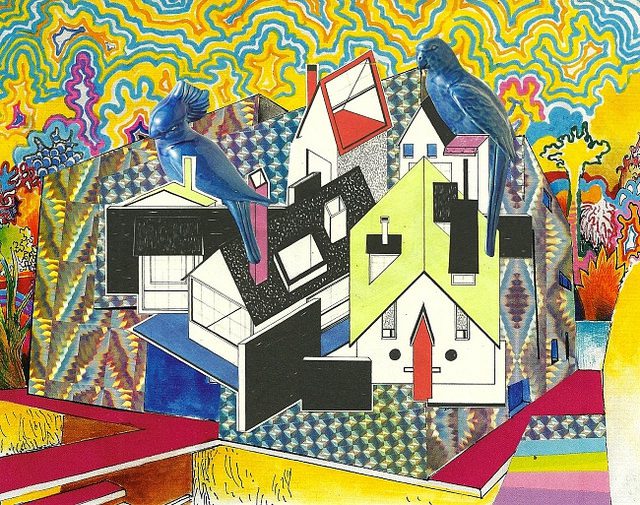When Habitat for Humanity volunteers Lynne Blaesser and Mary Scott were approached by a Habitat executive about the prospect of leading Newark Women Build in the fundraising and construction of its first project, they declined the offer. To break ground and complete construction of a home in Newark for a single mother and her five-year-old daughter, Newark Women Build needed $80,000. Besides their already full lives balancing career, family and community activities, Blaesser and Scott had no fundraising experience – a critical component of the Habitat process. Because they were already Habitat volunteers, they did offer to help once the project started.
But the Habitat executive did not give up and, after repeated attempts, eventually convinced them to helm the fundraising and construction project. In January 2003, Blaesser and Scott held the first meeting of Newark Women Build, with 23 volunteers in attendance.
Newark Women Build is a New Jersey affiliate of Habitat’s Women Build Program, which provides an opportunity for women to learn construction while addressing the problem of substandard housing. “We liked what the program stood for – bringing women together to work side by side for society and other women,” says Blaesser. “But being grassroots, and without any professional fundraisers, we knew that we would have to be creative to raise the money.”
Blaesser and Scott began by publicizing the project: speaking to church groups, women’s business societies, school associations and virtually anyone willing to listen. Fortunately for them, word spread quickly and interest in the project grew.
They distributed press releases and photographs to the local media, and sent profiles of their volunteers to community newspapers. They got some of the editors to run stories about the project, which provided additional coverage and led to donations and even new volunteers. Newark Women Build volunteers designed a brochure (and a local printer donated the cost of the printing) that was distributed to local stores and handed out at speaking engagements and local churches.
Taking an active role in raising funds, Blaesser and Scott came up with the idea to sell handcrafted pins. The pins were purchased for $7 and sold for $14. Volunteers traveled to craft fairs to sell the pins, and even set up shop at a local Bloomingdale’s – with express permission from the store’s manager. (This proved to be a very profitable venture: thousands of pins continue to be sold.)
On the heels of this success, Newark Women Build also designed and sold greeting cards. (They started with Mother’s Day cards, then added birthday and bereavement.) With their purchase, buyers were able to make a charitable donation to Newark Women Build in someone’s name in lieu of a present. Sales yielded $4,000 in profits.
Energized by their fundraising successes, other volunteers began sponsoring their own events to raise money for the project. Two women held a Christmas party and asked for donations instead of gifts, generating $5,000 in contributions in one evening. Others hosted cocktail parties, a cooking demonstration and a flower-arranging class, all requesting donations.
Thinking big, Blaesser and Scott planned a food and wine tasting, along with a silent art auction. The event, called “Windows of Opportunity,” showcased 15 restaurants, six wineries and several dessert companies. The Newark Club, where the event was held, donated the space for the night’s event. Organizers also obtained small sponsorships to pay for the wait and valet staff. The invitation was created and printed free of charge. All proceeds from the 340 tickets sold, plus the profits from the silent auction, netted Newark Women Build $28,000!
With all the “ups,” however, the group did experience some “downs.” Grant requests were turned down, and acquiring major corporate sponsorships was difficult. “A lot of companies were pulling back because of the economy,” says Scott. “It was tough and disappointing, and we thought, ‘How are we ever going to get this money?’”
“In seeking corporate sponsorships, we found that we were too small for a company to develop a publicity campaign around us,” Blaesser adds. “One year in, we didn’t think we were getting anywhere.”
Undaunted, the women of Newark Women Build rallied together and persevered. And in the last few months of fundraising, they made a corporate connection: Kitchen Expo donated $10,000 and a kitchen for the new house.
After raising $120,000, they broke ground on May 15, 2004. Although no longer actively fundraising, they continue to publicize the project and receive donations. Word-of-mouth (and an extensive e-mail list of contacts) plays a vital role in increasing awareness and garnering support.
Looking back, Blaesser and Scott agree that the task might have gone more smoothly if they had had attractive, informative literature at the outset, and if more people had been willing to speak to others on their behalf.
“At first, we thought that it would just be about having a couple of major sponsors and/or events,” says Blaesser. “As it turns out, our success was achieved by a lot of people doing small things. We had many small triumphs.”
“You get a lot of no’s, but you have to not be afraid or discouraged to keep asking,” adds Scott. “The money is out there; you just have to find it.”





Comments